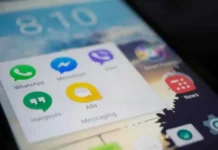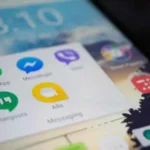If we have a mobile device, it is most likely that we also have the WhatsApp app installed to communicate with our family and friends.
Through it, we exchange a lot of information. Therefore, this article will review some of the security settings and guidelines that we must follow to keep our communications shielded and our privacy protected.
WhatsApp is the most popular instant messaging application in our country.
As in many others, to keep in touch with our family and friends, exchanging messages, photos and videos, even though calls and video calls.
This application encrypts the messages and files that we exchange with our contacts, preventing third parties from monitoring and reading our conversations. We can consider it a secure application.
In addition, the application has several options in its configuration that allow us to add an extra layer of security to further secure our information and privacy.
Also Read: Cloud Strategy The Trend-Setting Cloud Strategy
Next, we will review each of the configurations and comment on some extra security guidelines:
Whatsapp privacy within the application: We must first click on the three points icon in the upper right corner> Settings> Account> Privacy. The steps to follow may vary slightly if we have an Apple brand phone (iOS), although most are very similar.
Inside, we can modify the visibility of the following information:
If we deactivate it, we will not be able to see this information in our contacts either.
1. Hour of last time: we can select who will see the time of our previous connection:
- Everyone: Any user who has my phone number.
- My contacts: only those users whom I have registered as contacts.
- Nobody: no user.
2. Profile photo: we can select who can see it (‘Everyone’, ‘My contacts’ or ‘Nobody’).
3. Info: Select who can see our description (‘Everyone’, ‘My contacts’ or ‘Nobody’).
4. Status: we can filter so that all ‘My contacts’ can see it, which are those people that I have saved in my phone’s schedule. If we want specific contacts not to see our statuses, we will select ‘My contacts, except…’, and then the contacts we want to prevent from seeing them. If we want it to be the opposite, we will mark the option ‘Only share with…’ and indicate which contacts to share them with.
5. Reading confirmations: the reading confirmation or the famous “blue tick” let us know if our contact has read our message. If we deactivate it, there will only be a grey tick if the message has been sent or a double grey tick when it has already been received, but we will never know if the recipient has read it.
With this option, we can activate or deactivate it, although we will not see the confirmations of our contacts either.
6. Groups: having many groups can be annoying and dangerous since there may be unknown contacts with bad intentions. To avoid this, we will click on ‘Groups’ and follow these steps:
We’ll mark the ‘My Contacts’ option to limit it to only users we know.
We can also add exceptions from ‘My contacts, except…’ and select those we do not want to be added to groups.
7. Real-time location: at the end of the list, we will see this option, which will inform us if we share our location with a contact. We must deactivate it whenever we are not using it (Android and iOS).
8. Blocked Contacts: It is possible to block or report contacts from the application. This option is handy, and we should use it whenever we come across a connection that sends us unwanted advertising, malicious links or files or has behaviour that makes us uncomfortable. Doing it is very simple, and we only have to:
Click on the ‘Add contacts’ icon, located at the top right.
Then, we must select the contact that we want to block.
Additionally, we can perform this action from the conversation with the contact, clicking on their name and ‘Block’.
9. Fingerprint Lock
Fingerprint lock/screen lock: Some devices have an option to recognize our fingerprints or even our face. In this case, we will have this option within the privacy options to unlock the application, depending on whether we have an Android or iOS device.
In the case of Android, we will find the option’ Lock with fingerprint’. When entering and activating it, we must follow the steps to configure our fingerprint.
In the case of iOS, we will find the option ‘Lock screen’. By clicking on it, we can enable the ‘Face ID’ or ‘Touch ID’ function, depending on our device, to configure our face or fingerprint to lock and unlock the application.
Configure Security Options
If we go back to Settings> Accounts and click on ‘Security’, WhatsApp will allow us to activate or deactivate the function to ‘Show security notifications’ (security codes).
By doing so, WhatsApp will notify us every time the security code of one of our contacts changes. Encrypted chats have their own security code and are unique to each conversation. This key can be changed manually or when we reinstall the App on a new device.
For security, it is convenient to have it enabled so as not to fall into the trap of cybercriminals who have been able to impersonate a known contact.
Set up ‘two-step verification
Two-step verification will allow us to create a six-digit PIN code that will be requested from time to time when entering the application. This will protect us from identity theft by preventing the third party from accessing our account.
To enable this function, we only have to:
- Go back to Settings > Account and click on ‘Two-Step Verification‘ and ‘Activate’.
- Once created, we can change it whenever we want from within the application.
If you forget the code, WhatsApp will send us an email to our Gmail account with a link to redirect us to a website from which we can reset the code. If we don’t, our WhatsApp account could be blocked for seven days as a security measure.
Configure ‘Ask For My Account Information
This function allows us to request information in the form of a report with our ‘Settings’ configuration and the data of our WhatsApp account.
It is helpful to know precisely all the personal information that we have shared with the application, as well as to have a copy of our configuration, groups to which we belong and other data, such as name, associated telephone number, IP address of our last connection, devices, operating system used, etc. For it:
- We will return to Settings> Account and click on ‘Request info. Of my account’.
- Then we will select ‘Request report’.
We will have the report in approximately three days with everything requested.
Configure ‘Storage and Data’
The application allows us to download files of all kinds and share links. To avoid downloading a virus or clicking on a malicious link, we recommend tips. We can activate or deactivate the automatic file download function:
- We will go back to ‘Settings’ and click on ‘Storage and data’.
- In ‘Automatic download’, we can select what type of files to download depending on the kind of connection we have:
Mobile data: When we have activated the Internet connection through the data contracted with our mobile phone provider.
Wi-Fi: whenever we are connected to a Wi-Fi network.
In data roaming: when we connect to a network other than the one we have contracted, such as when we travel outside our country.
Configure Temporary Messages
Some configuration options are found within the conversations with our contacts, as is the case with temporary messages.
Once we activate this feature in a chat, all messages that are sent will disappear after seven days. Of course, the files we have downloaded will remain on our devices. In addition, a third party could take a screenshot of the conversation during this period, so activating this option does not guarantee that this information will be deleted forever.
To activate it, we must:
- Click on the name of our contact and select ‘Temporary messages’.
- We will then select ‘Continue’ and ‘On’ to enable the feature.
Protect Our Privacy in Video Calls
Like our conversations, video calls are also protected and encrypted by the application itself. However, we must be careful with who we make them and what we show in them.
- Avoid showing intimate or sexual content. We could be exposing ourselves to a sextortion, or our personal photographs or videos end up being published on the Internet and reach the hands of our acquaintances.
- Avoid showing documents with personal information, such as invoices, ID, emails, etc. They contain sensitive data, such as our address, name and surnames, or the ID number itself, which cybercriminals can use for fraud.
- Also Read: What is the Best Antivirus for Mac





![SEO Strategies to Improve the Rankings of Websites [2024] SEO strategies](https://www.iblogtech.com/wp-content/uploads/2024/07/SEO-150x150.webp)








